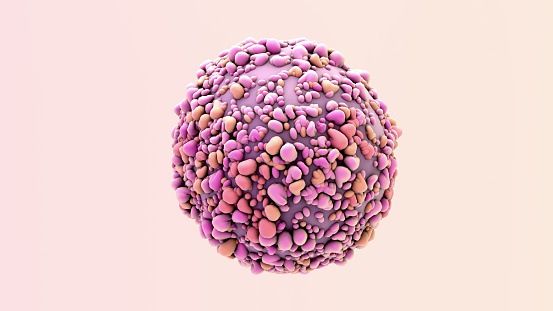
According to a study, published in Histology and Histopathology, there is a “considerable proportion” of dissonance in clinicopathological characteristics observed in patients with synchronous bilateral breast cancer (SBBC). The retrospective analysis and matched comparison also revealed that “SBBC with triple negativity on both sides is a prognostic for poor survival,” wrote Yan Bai and collaborating pathologists from the Peking Union Medical College in Beijing, China.
The study was conducted on the clinicopathological characteristics of 114 patients with SSBC at the Peking Union Medical College Hospital between 2008 and 2019. The primary goal of the analysis was to determine the prognostic relevance of triple negativity disease status and coexistence ductal carcinoma in situ (DCIS) with bilateral invasive ductal carcinomas of no specific type (IDC-NST).
According to the article, most patients with bilateral lesions on both sides were IDC-NST, grade 2, luminal subtype, and stage I. Additionally, the authors noted that, “although most lesions were concordant between the left and right side, discordances were observed in histological type (25 cases, 21.9%), histological grade (31 cases, 27.2%), pTNM (61 cases, 53.5%), molecular subtypes (20 cases, 17.5%), and immunohistochemical staining of ER (18 cases, 15.8%), PR (26 cases, 22.8%), and HER2 (12 cases, 10.5%).” There was no significant difference in disease-free survival (DFS) and overall survival (OS) between cases of IDC-NST with coexisting DCIS on both sides and pure IDC-NST or IDC-NST with one side of coexisting DCIS. As noted, triple negativity on both sides in SBBC was associated with significantly shorter DFS and OS compared to cases with one-sided triple negativity and cases with no triple negativity (p <0.001).
The authors validated the independent prognostic capabilities of triple negativity in multivariate analysis, helping to inform their conclusion of a considerable degree of dissonance in SBBC disease characteristics. Ultimately, they advanced that their study evidences “the necessity of comprehensive pathological examination including immunohistochemical testing on both sides in clinical practice.”







 © 2025 Mashup Media, LLC, a Formedics Property. All Rights Reserved.
© 2025 Mashup Media, LLC, a Formedics Property. All Rights Reserved.